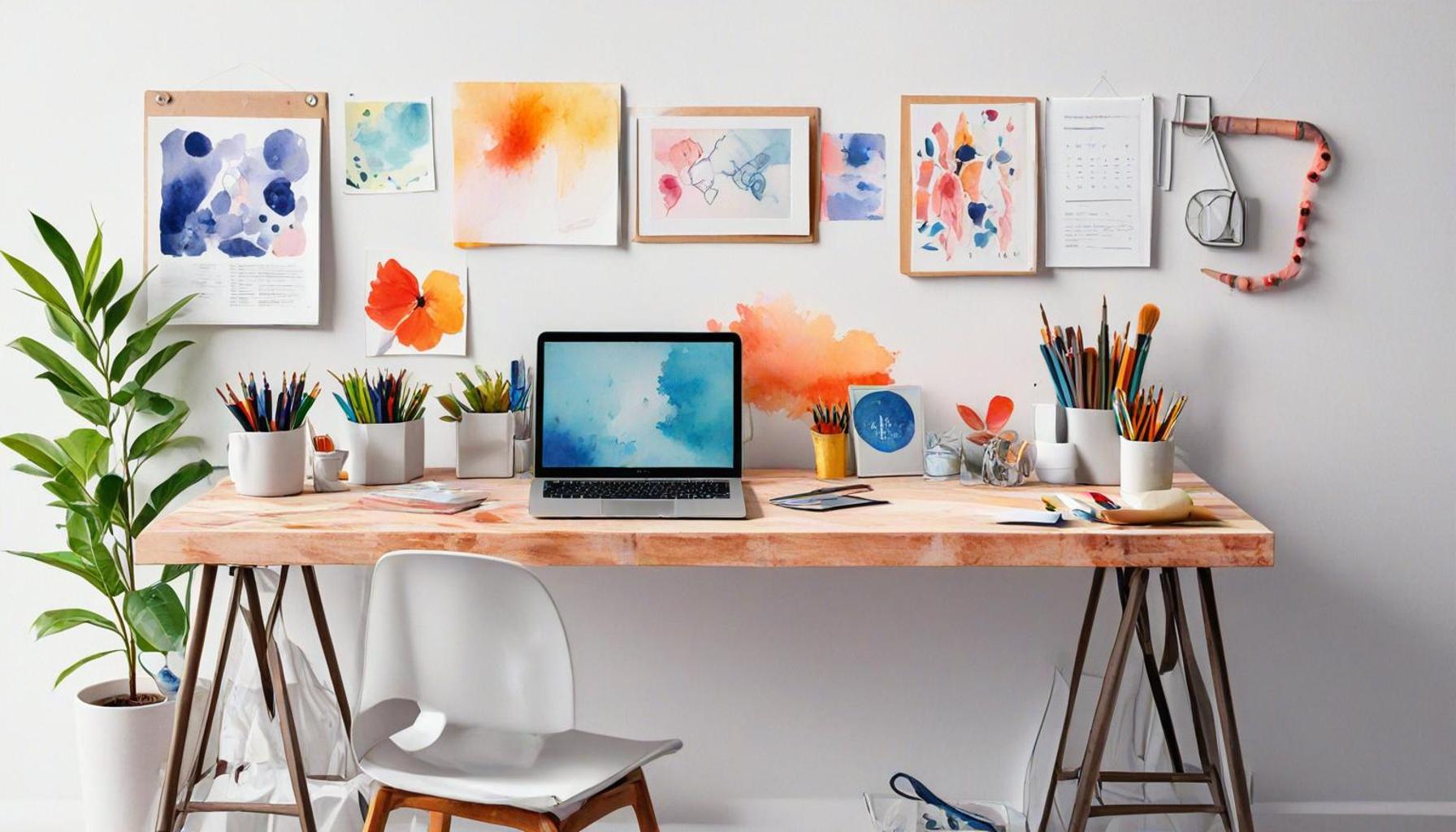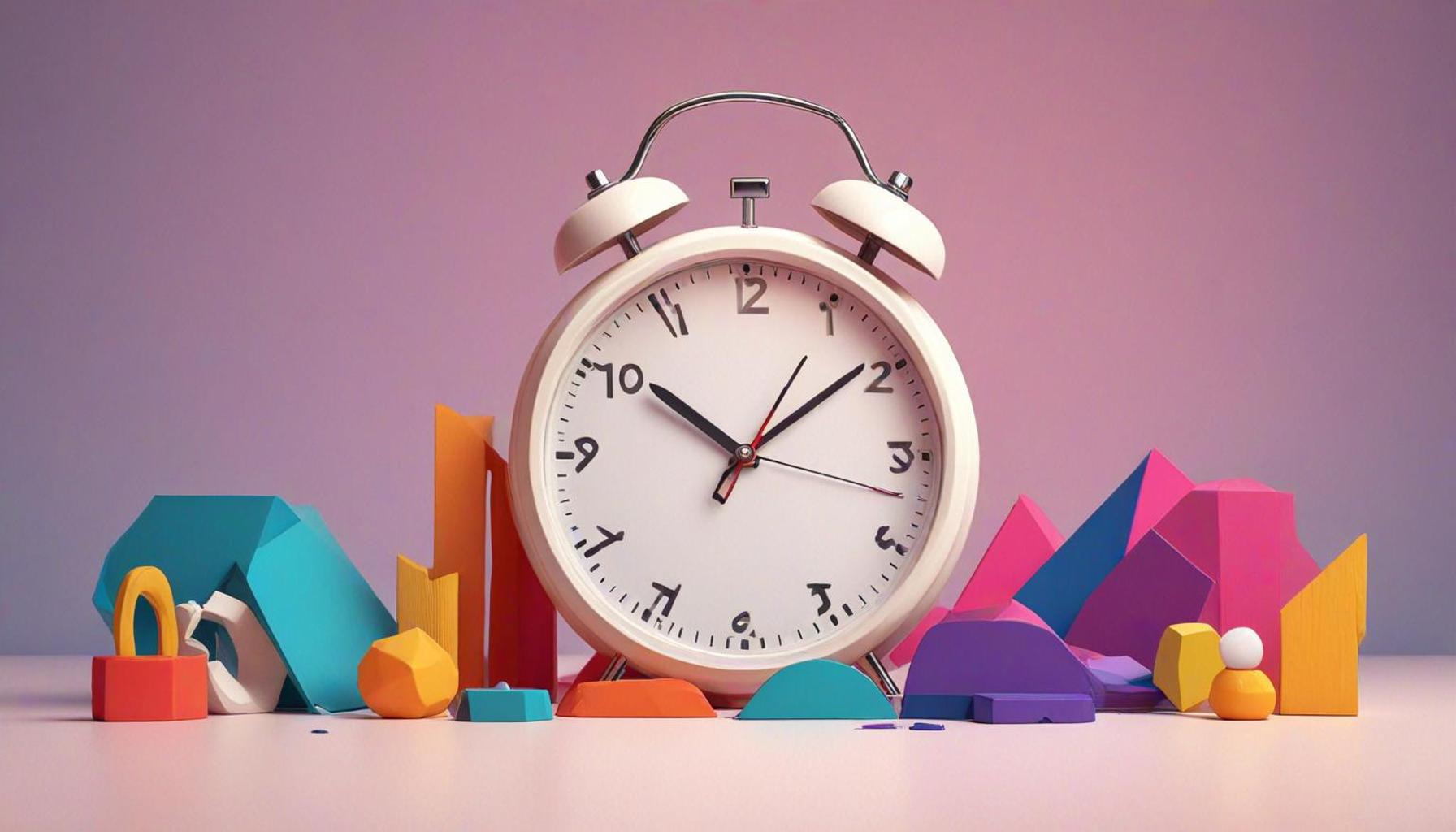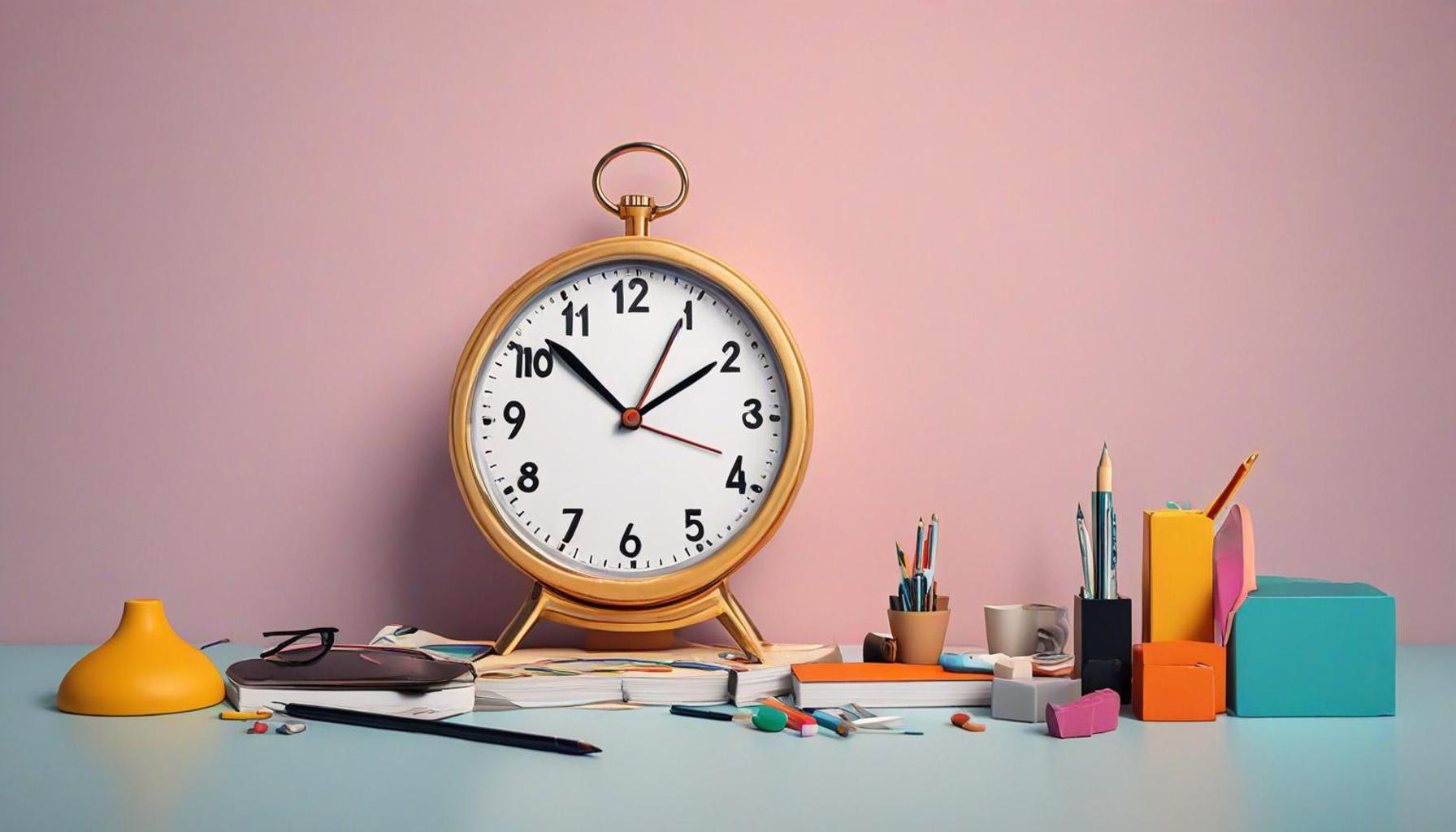Developing a Minimalist Workspace: Tips to Increase Efficiency and Time Management

The Importance of a Clean Workspace
A cluttered workspace can hinder productivity, making it challenging to focus and manage time effectively. Research consistently shows that physical environments directly impact mental clarity and efficiency. Embracing a minimalist workspace can transform your environment and improve your efficiency, allowing for clearer thought processes and better overall work output. By minimizing distractions, you enable yourself to concentrate better on the tasks that matter most.
Adopting a minimalist approach doesn’t merely mean removing items from your desk; it requires an intent to cultivate an atmosphere that promotes productivity and calmness. Consider the following elements of a minimalist workspace:
- Decluttering: Assess your space and remove unnecessary items that don’t serve a purpose. For example, if there are old papers piled up that no longer require your attention, now is the time to recycle them. Aim for a workspace that holds only items that you actively use, like your computer, a notepad, and essential tools.
- Organized Layout: Arrange your desk and tools for easy access. This could involve using drawer dividers to keep pens, paper clips, and other supplies orderly. Consider ergonomics, ensuring that your most frequently used tools are within arm’s reach, thereby reducing the time spent searching for them.
- Neutral Palette: Use calming colors to maintain a peaceful atmosphere. Soft blues, greens, or even whites can set a tone that encourages tranquility and focus. It’s also worth noting that research indicates that color can influence mood and productivity significantly, so choosing the right shades may enhance your work experience.
Numerous studies confirm that a clean and minimalist workspace can lead to a significant boost in productivity and time management. For instance, research from the American Psychological Association suggests that individuals working in minimalistic environments experience lower levels of stress and higher focus levels. This reduction in cognitive load allows for greater problem-solving abilities and creativity.
Adopting these principles will enhance not only your workspace but your work habits as well. Practical tips like dedicating time every week to reorganize your space or making it a norm to leave your desk clear at the end of each day can be transformative. As you explore these strategies, you may find that a minimalist approach offers a fresh perspective on how to be more effective in both personal and professional realms, promoting not just productivity but also a sense of fulfillment in your work life.
DISCOVER MORE: Click here for practical organization tips!
Streamlining Your Workspace for Maximum Efficiency
Creating a minimalist workspace is not just about aesthetics; it’s a strategic move towards enhancing your efficiency and time management. By thoughtfully designing your work environment, you pave the way for reduced distractions, improved focus, and increased productivity. The key to achieving this lies in understanding how specific elements of your workspace interplay to create a conducive atmosphere.
Identify Your Essentials
Before diving into decluttering, start by identifying the essentials that support your daily tasks. This means taking a pragmatic approach to what items genuinely assist you in performing your duties. Consider the following:
- Tools of the Trade: Evaluate the equipment and tools you use regularly. This includes your computer, printer, chargers, and specific industry-related tools. Make sure these items are in optimal working condition and accessible.
- Organizational Tools: Use folders, organizers, and digital applications to keep your documents in order. Whether it be physical forms or digital files, having them in a structured manner will prevent overwhelm.
- Personal Touches: While minimalism encourages a clutter-free aesthetic, a few personal items can enhance motivation. A picture of a loved one or a single plant can provide inspiration without overwhelming your space.
Adopting Digital Minimalism
In the age of technology, a minimalist workspace extends beyond physical space into the digital realm. Digital clutter can be just as distracting as physical clutter. Commit to digital minimalism by practicing the following:
- Streamlined Desktop: Keep your computer desktop neat. Limit icons to only those that you need quick access to, and utilize folders for better organization.
- Email Management: Unsubscribe from irrelevant newsletters and use filters to categorize incoming emails. A clean inbox enhances your ability to focus on important communications.
- Schedule Automation: Leverage tools like calendar apps to automate reminders for important tasks or deadlines. This minimizes cognitive load and helps you allocate your time more efficiently.
Statistics illustrate the profound impact that a minimalist workspace can have on productivity. A study by the Princeton University Neuroscience Institute suggested that a cluttered environment can diminish your ability to pay attention, while a streamlined space can enhance focus and decision-making ability. The environment doesn’t just house your physical tools; it reflects your mental state and impacts your overall performance.
Transitioning towards a minimalist workspace can seem daunting, but start small. Each step you take towards decluttering, organizing, and simplifying will translate into gains in efficiency and time management. As you embrace these strategies, the rewards may extend beyond your workspace—cultivating habits that promote clarity and focus in various aspects of your life.
| Advantages | Description |
|---|---|
| Enhanced Focus | A minimalist workspace minimizes distractions, allowing for better concentration. |
| Increased Productivity | Streamlined environments streamline processes, boosting overall efficiency and output. |
| Clear Mental Clarity | Less clutter leads to a clearer mind, fostering creativity and problem-solving. |
| Time Management | Fewer resources reduce decision fatigue, enabling quicker task completion. |
The minimalist workspace cultivates a productive atmosphere through reduced visual clutter and organized space. In focusing on essentials, individuals can reap the benefits that arise from clarity in both physical and mental environments. For instance, implementing simple storage solutions can ensure vital tools are easily reachable. This facilitates efficiency while maintaining a clean look. Moreover, having fewer items in your workspace directly contributes to a sense of control over one’s surroundings. This psychological comfort can significantly reduce stress and enhance overall time management skills. With growing demands in today’s fast-paced world, adopting a minimalist approach may inspire innovative solutions to improve not only efficiency but also individual well-being. Thus, exploring further into design choices or decluttering techniques can shed light on how to achieve an optimal workspace that supports both productivity and time management.
DISCOVER MORE: Click here to delve deeper
Establishing Efficient Work Habits
In addition to creating a minimalist workspace, cultivating efficient work habits can be pivotal in enhancing your efficiency and optimizing time management. By restructuring how you approach your daily tasks, you can leverage a minimalist mindset to maximize productivity.
Time Blocking Techniques
One effective method to manage time is the time blocking technique. This strategy involves dividing your day into dedicated blocks of time for specific tasks. Here’s how you can implement this:
- Identify Your Focus: Outline the tasks you need to accomplish for the day and categorize them into high, medium, and low priority. This ensures that your most important tasks receive the attention they deserve.
- Schedule Your Blocks: Assign specific time slots for each task, allowing a predetermined amount of time to complete each one. By doing so, you can prevent tasks from dragging on and result in prolonged focus.
- Block Breaks: Include short breaks within your time blocks to refresh your mind. A brief pause, typically every 25-30 minutes, can dramatically enhance your productivity and sustain energy levels throughout the day.
Implementing the Two-Minute Rule
The Two-Minute Rule is a productivity technique popularized by productivity expert David Allen. It encourages you to take immediate action on tasks that can be completed in two minutes or less. Here’s how to incorporate it into your workspace:
- Quick Tasks First: If you find an email, a small project, or a phone call that fits within this time frame, complete it immediately. This prevents small tasks from piling up and becoming mentally burdensome.
- Reduce Overwhelm: By eliminating these quick tasks promptly, you create a cleaner mental slate, which can improve your overall ability to focus on more complex tasks that demand extended attention.
Regular Reviews and Adjustments
To maintain an effective minimalist workspace, it’s important to conduct regular reviews of your systems and strategies. Setting aside time weekly or monthly for self-reflection can be invaluable:
- Assess Your Tools: Consider what tools and systems are working for you. Are there items in your workspace that are no longer necessary? Evaluate ways to improve efficiency, whether through new technology or software solutions.
- Adjust Task Management: If something isn’t working, be open to adjusting your scheduling or habits. Experiment to find rhythms and routines that align with your natural productivity patterns.
- Solicit Feedback: If you work with a team, seek input from colleagues on how the collective workspace can be improved. Fresh perspectives can often reveal blind spots and uncover new strategies.
Implementing these strategies in the context of a minimalist workspace contributes not only to increased efficiency but also to a more manageable workload. By focusing on essential tasks, employing simple techniques for organization, and regularly evaluating your processes, you will not only cultivate greater productivity but also create a healthier balance in your work life.
DISCOVER MORE: Click here to learn about the benefits of decluttering
Conclusion: Embracing Minimalism for Enhanced Productivity
In a fast-paced world brimming with distractions, developing a minimalist workspace emerges as a powerful catalyst for boosting efficiency and mastering time management. By eliminating unnecessary clutter, focusing on essential items, and establishing structured routines, you can create an environment that fosters concentration and creativity. The integration of techniques like time blocking and the Two-Minute Rule can further streamline your workload, encouraging you to focus on high-priority tasks and maintain mental clarity.
Moreover, regular assessments of your workspace and work habits empower you to adapt to changing needs, ensuring that your strategies remain effective and aligned with your personal productivity style. This approach not only optimizes your daily output but also cultivates a sense of control and satisfaction in your work life. With a minimalist workspace, you foster an atmosphere that nurtures innovation and reduces stress.
Ultimately, the journey toward a minimalist workspace is as much about mindset as it is about physical space. Embracing simplicity can lead to profound impacts on your overall productivity and well-being. As you implement these transformative practices, you’ll discover that a well-organized, focused environment not only enhances efficiency but also creates room for new ideas and greater fulfillment in your professional endeavors. Dive deeper into the principles of minimalism, and watch your productivity soar.


